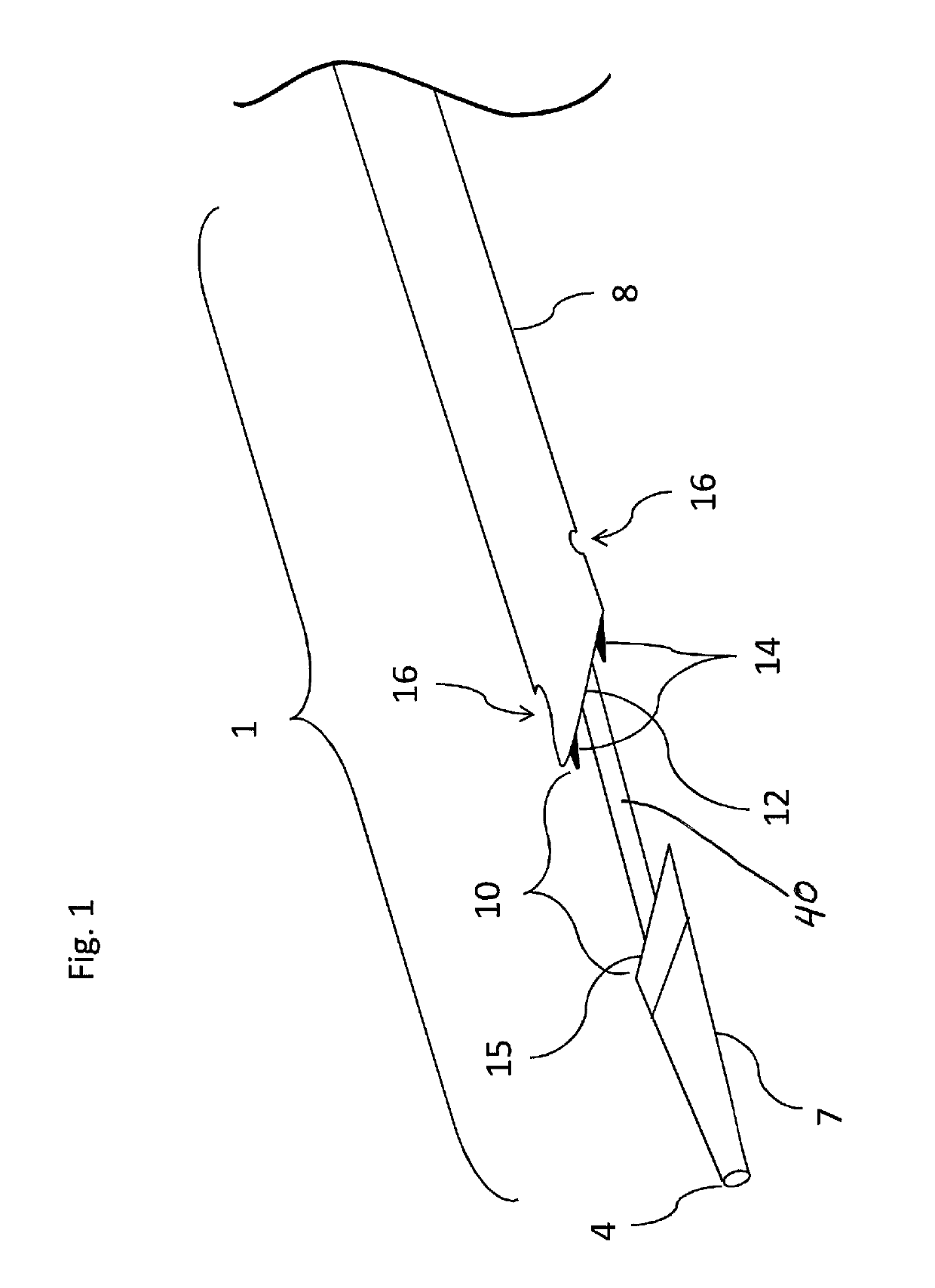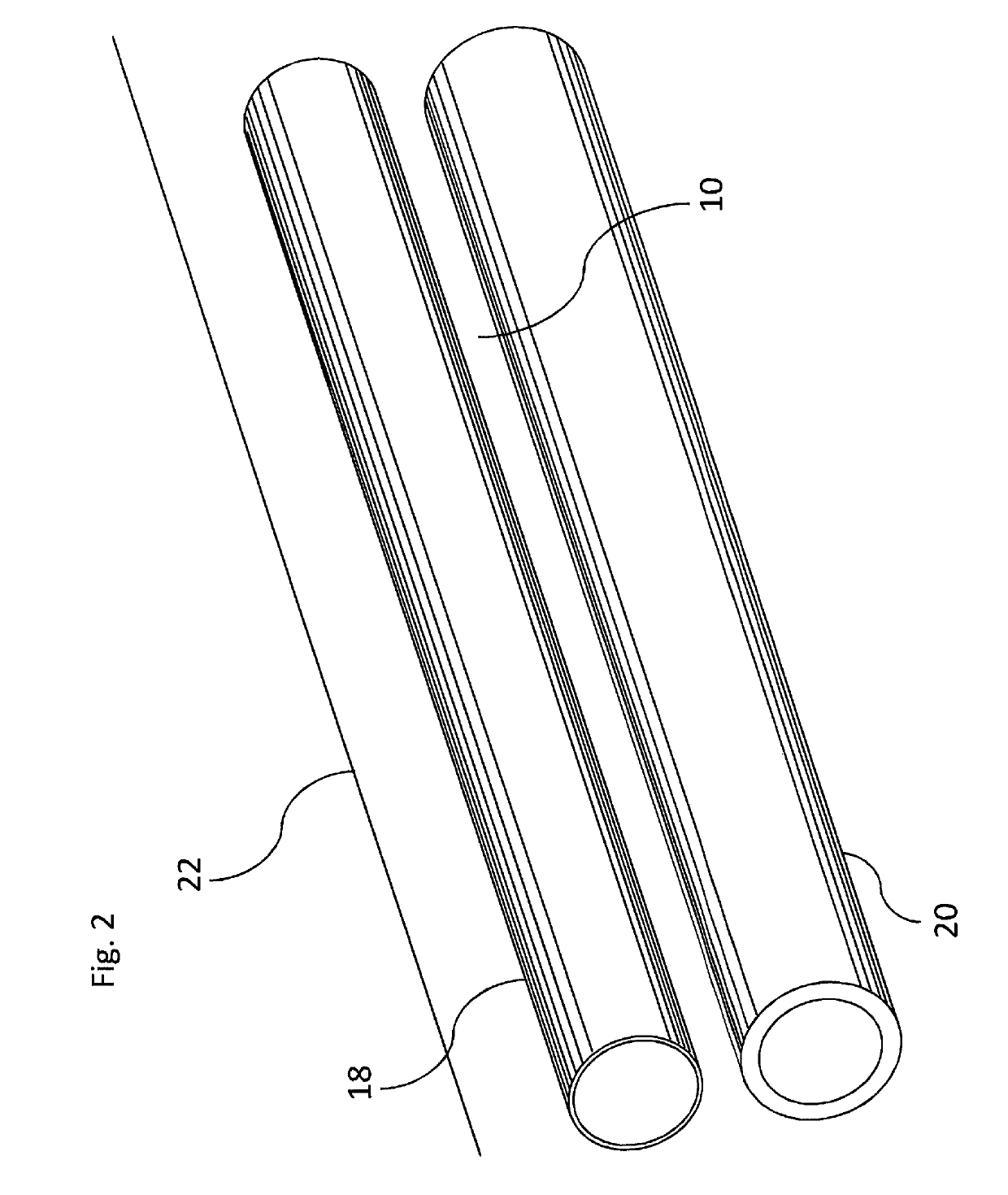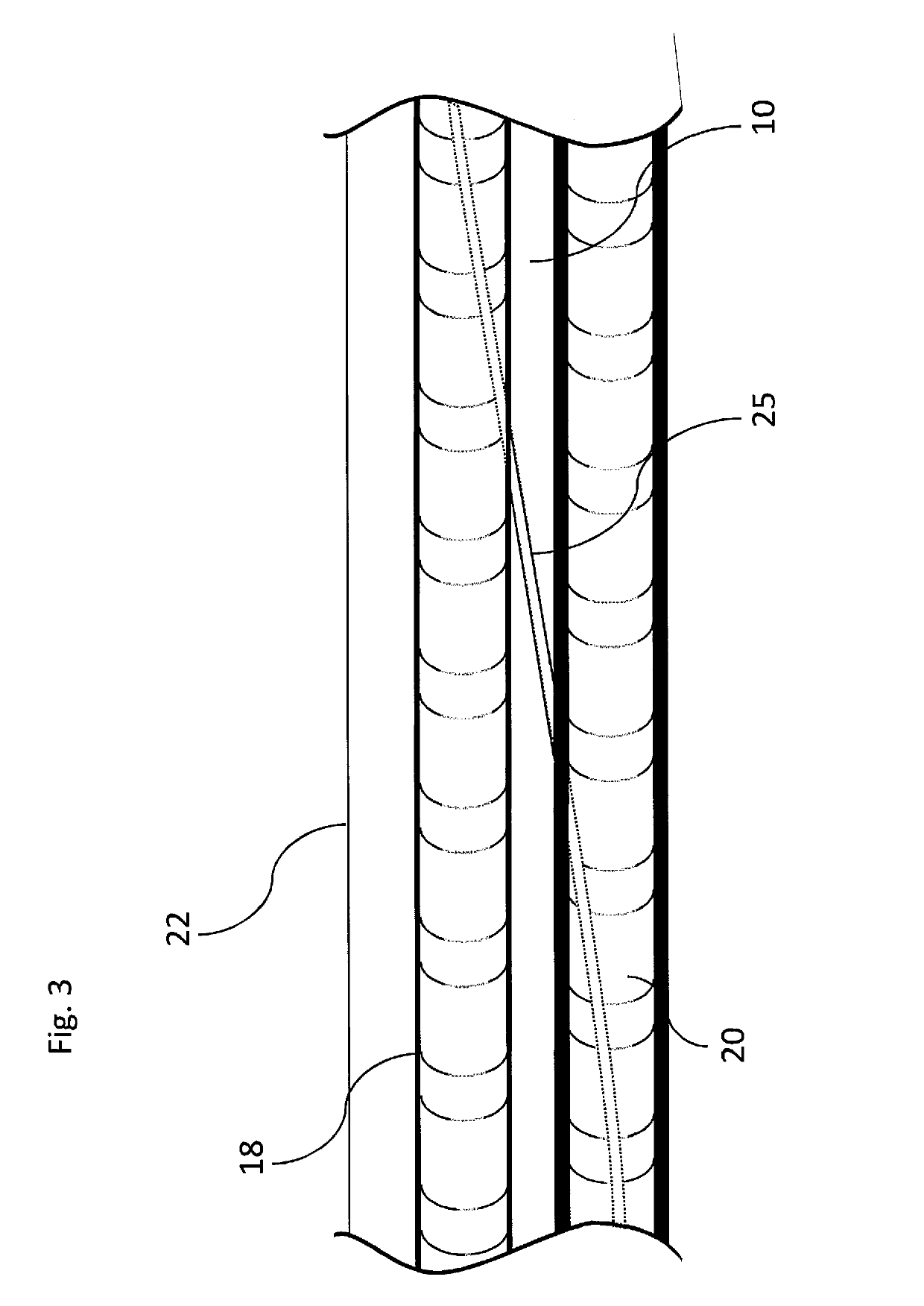Externally supported anastomosis
an anastomosis and external support technology, applied in the field of external support anastomosis, can solve the problems of inability to achieve long-term flow stability
- Summary
- Abstract
- Description
- Claims
- Application Information
AI Technical Summary
Benefits of technology
Problems solved by technology
Method used
Image
Examples
Embodiment Construction
[0043]Referring now more particularly to the drawings, the inventive system is grounded by a basic need to bring two vessels together in order to form a fistula. In one embodiment of the present invention, the device is embodied by a catheter 1 (FIG. 1). The catheter 1 is guided by a guidewire through a distal port 4 that accesses a lumen that extends through the entire length of the catheter. The catheter has a distal jaw or distal tip 7 that accesses a second, distal vessel 20 (FIG. 2), leaving vessel walls from both vessels 18, 20 (FIG. 2) in a gap 10, as well as a proximal jaw or proximal base 8. A proximal jaw face 12 engages a distal inner wall of the first vessel 18, while a distal jaw face 15 engages the proximal inner wall of the second vessel 20. Ports 16 enable the catheter to inject a stabilizing material into the extra-vascular space. A cutting mechanism 14 serves to punch the orifice between the vessels to create the fistula.
[0044]As noted above, FIG. 2 illustrates an ...
PUM
 Login to View More
Login to View More Abstract
Description
Claims
Application Information
 Login to View More
Login to View More - R&D
- Intellectual Property
- Life Sciences
- Materials
- Tech Scout
- Unparalleled Data Quality
- Higher Quality Content
- 60% Fewer Hallucinations
Browse by: Latest US Patents, China's latest patents, Technical Efficacy Thesaurus, Application Domain, Technology Topic, Popular Technical Reports.
© 2025 PatSnap. All rights reserved.Legal|Privacy policy|Modern Slavery Act Transparency Statement|Sitemap|About US| Contact US: help@patsnap.com



